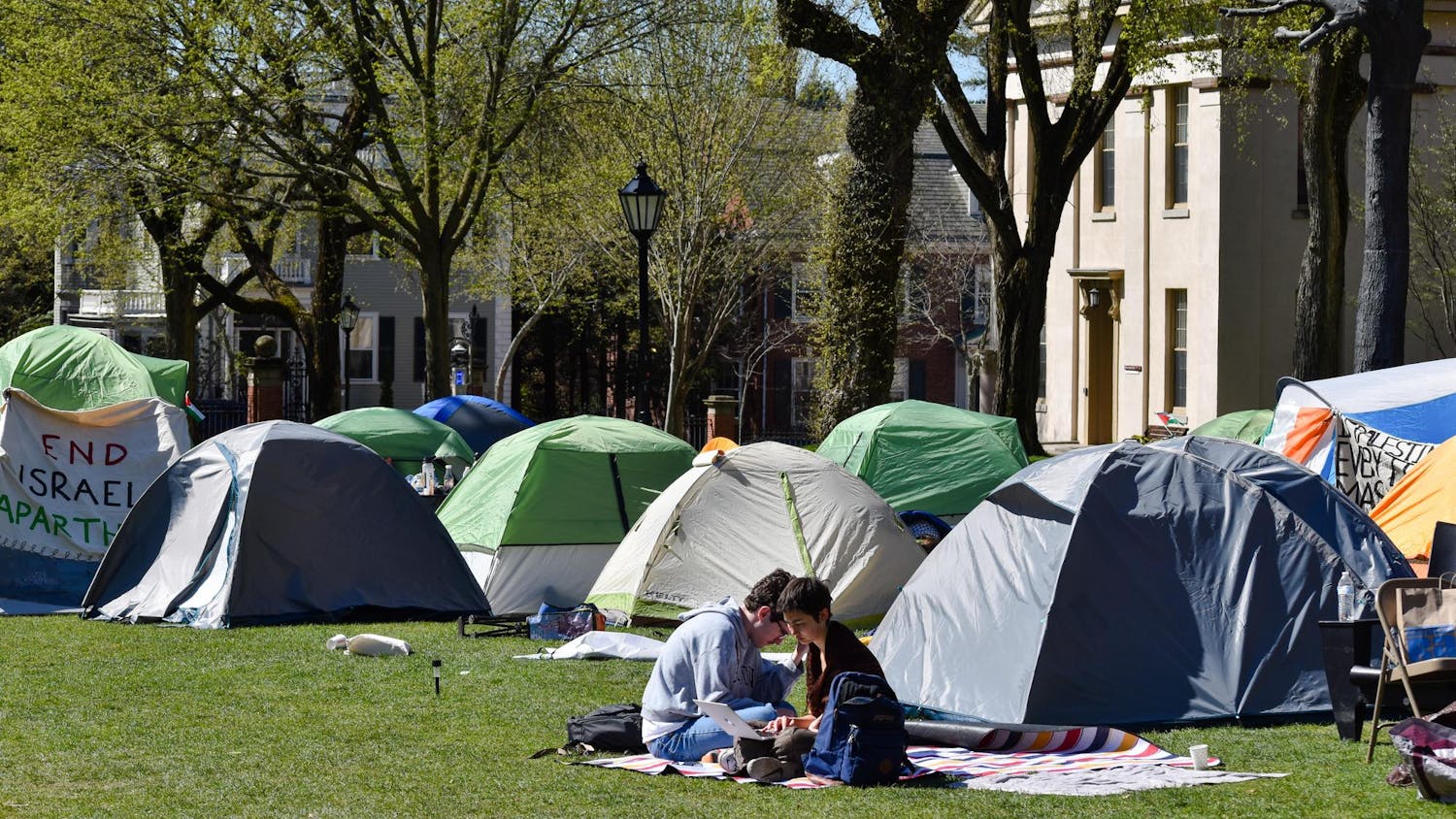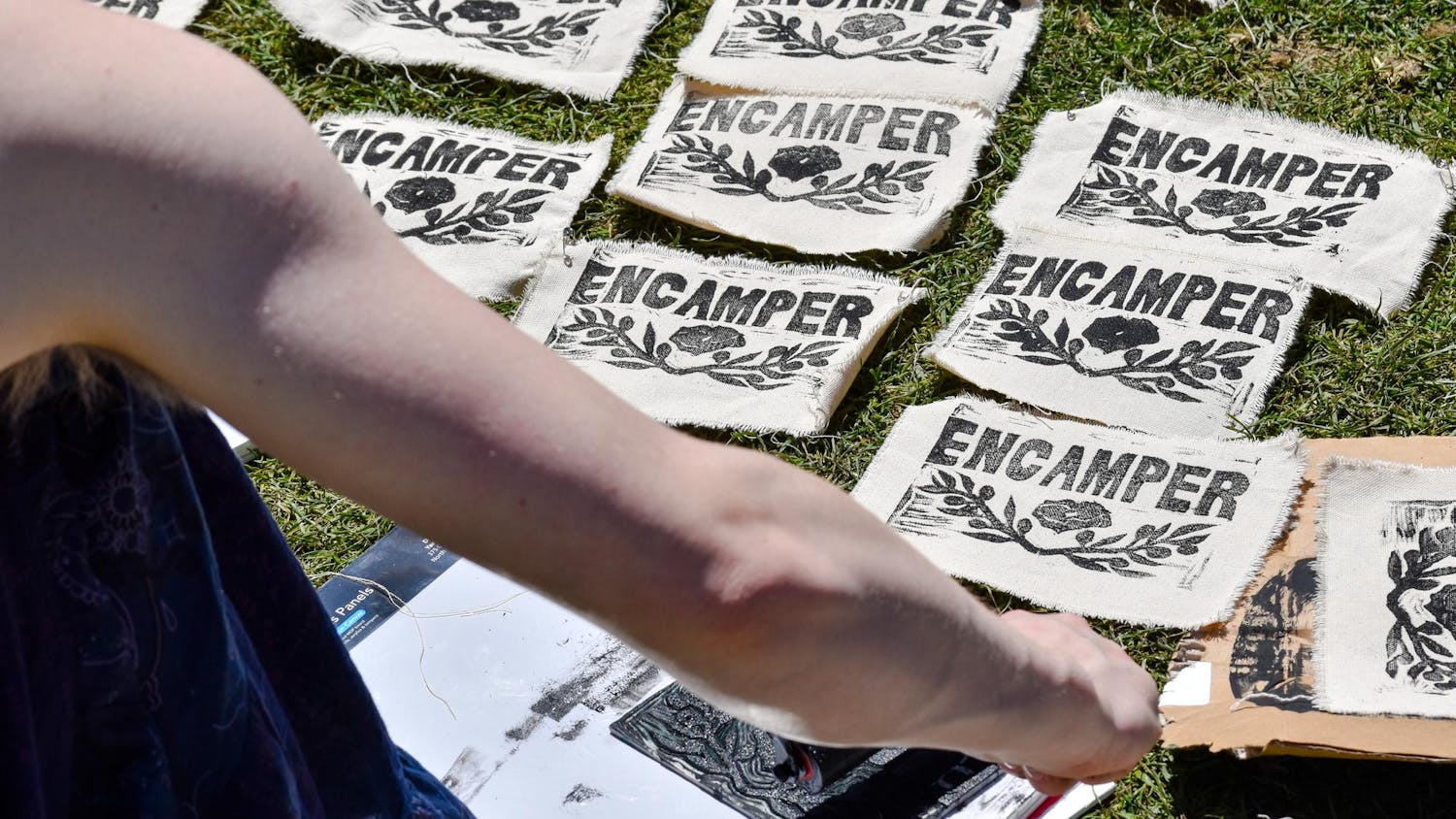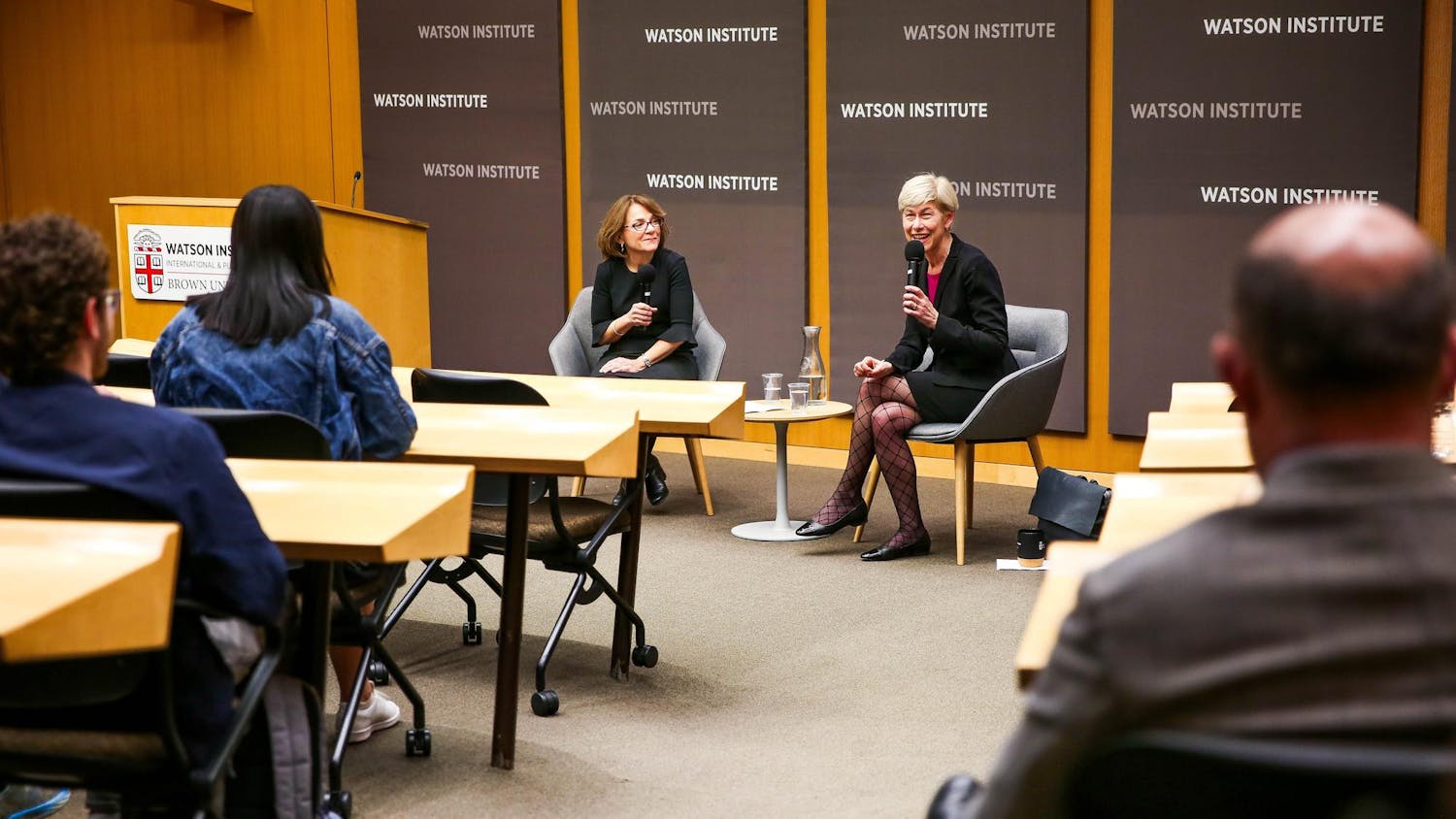Brown has a well-established reputation for its liberal political bent: In The Herald’s first-year poll, nearly three-quarters of the first year class self-identified as very or somewhat liberal — a proportion on par with the rest of the student body as of 2020.
Using public records of political donations, The Herald analyzed which parties, campaigns and causes University employees and students have supported since the turn of the century.
From 1999 to June 2023, 74,656 donations totaling $2,840,386 were made to federal election committees by individuals who indicated themselves as an employee or student of the University at the time of their donation. Ninety-five percent of these funds were given to Democratic candidates and left-leaning organizations. Four percent supported Republican candidates and right-leaning organizations, and 1% supported those with no party affiliation. In 14 of the 25 analyzed years, students made no contributions to Republican causes.
Since the data exclude July, August and September 2023, they do not capture many donations made in the run-up to the recent primary election for Rhode Island’s 1st Congressional District. The information is also self-reported, meaning that the students who reported their donations noted their affiliation with the University as opposed to indicating that they were unemployed.
Overall, Brown employees and students donate 27 times more to left-leaning candidates and causes than to right-leaning ones.
While the University as a non-profit institution is prohibited from donating to political causes, individual employees have no institutional restrictions on their donations.
Over the years, the amount donated has fluctuated greatly, but the trend has remained the same: Students and employees at Brown overwhelmingly donate to Democratic candidates running for federal office.
Contributions over time
Until the election of former President Donald Trump in 2016, political contributions by Brown-affiliated donors remained relatively steady, never eclipsing $180,000 per year. Contributions spiked every four years during presidential election cycles, with the majority of donations going to presidential campaigns.
Before Trump’s election, donations spiked in 2008 and 2012 as former President Barack Obama vied for the White House. Throughout these years, the donations remained overwhelmingly Democratic.
Since Trump’s full-fledged arrival on the American political stage, students and employees have donated larger totals to Democratic causes. The 2016 election topped the charts for student contributions with nearly $90,000 in total donations — all of which went to Democratic causes.
2020 saw the most in employee donations, with over $700,000 in donations made to left-leaning organizations, including campaigns.
“The policies and behaviors of (former) President Donald Trump and his administration were broadly unpopular among college-educated voters,” Richard Arenberg, visiting professor of the practice of political science, wrote in an email to The Herald. “This, I believe, led not only to higher rates of voting and involvement in campaign activities for Democrats, but also campaign contributions.”
Number of donors
While the contributions made by those affiliated with Brown have largely followed a cyclical trend, the number of donations has remained higher since 2016. During the 2018 and 2022 midterm elections, the number of contributions outpaced those during the 2008 and 2012 presidential elections.
The number of donations by both students and employees reached a peak during the 2020 presidential election, with about 21,500 contributions to Democratic candidates and liberal organizations — more than triple the total number of donations in any other year. Just 193 contributions were made to conservative-affiliated organizations in that year.
Average contributions
The average amount donated has steadily declined since the early 2000s, a trend that coincided with an increase in number of donations. Before 2010, 58% of all donations from Brown students and employees were $50 or less. Between 2010 and 2023, that percentage rose to 91%.
But the average size of donations to right-leaning organizations has remained consistently higher than liberal recipients. In 2022, the average donation to a conservative candidate was about 13.5 times that to a liberal-affiliated one — $513, compared to $38.
According to Arenberg, small-dollar donations allow candidates “to go back to the donors repeatedly during the campaign to ask for additional low-dollar contributions.”
In contrast, candidates who rely on large-dollar donors “sometimes run up against contribution limits and cannot go back again to their previous contributors,” he wrote.
Unique donors
The Herald also analyzed the total number of contributors, regardless of the number of donations they have made.
The data show an increase in the number of unique donors over time, reaching a peak in 2020. 1,601 employees and students donated to liberal campaigns that year, compared to 43 supporting conservative ones.
The vast majority of unique donors comes from individuals employed by the University, as self-identified students were less likely to make campaign contributions in the data. Among students, the number of unique donors was nearly equal in 2016 and 2020, at 134 and 133 donors, respectively. More unique employees contributed to campaigns in the leadup to the 2020 presidential election than any other cycle: 820 employees donated in 2019, and 1,533 did so in 2020.
Those donating to committees that identify as neither left- or right-leaning have hovered at around 10 donors per year.
Notable donors
High-ranking administrators have been among the most frequent and generous of these donors.
Both President Christina Paxson P’19 MD’20 and former President Ruth J. Simmons have only donated to Democratic-affiliated committees during their employment at Brown. Simmons was the second-most prolific donor, with nine individual contributions during her time as president and 10 afterward, totaling $82,000 since 2003. She has donated primarily to the Democratic National Committee, along with Senator Sheldon Whitehouse’s (D-R.I.) Senate campaigns, Obama’s presidential runs and Royce West’s failed 2020 bid for Senator John Cornyn’s (R-T.X.) seat.
Paxson has donated to political causes four times since arriving at Brown in 2012, totaling $19,500. She made donations to the DNC, former Rep. David Cicilline ’83 (D-R.I.-1), Senator Jack Reed (D-R.I.) and former Rep. James Langevin (D-R.I.-2). Paxson declined to comment for this story.
Next election
Since the start of 2023, the pattern of heavily-Democratic donations among Brown students and employees has continued, with $38,000 donated to affiliated organizations by the end of July. Sixty dollars went to Republican-supported organizations and $2,000 went to nonpartisan committees.
With former President Trump a clear favorite to repeat as the Republican nominee for the third presidential election in a row and Democrats rallying around Biden, a repeat of the 2020 election matchup appears increasingly likely. Given these conditions, Arenberg said he expects the historical trends to continue as Democratic donations and benefactors remain the dominant force driving College Hill’s spending.

Owen Dahlkamp is a Section Editor overseeing coverage for University News and Science & Research. Hailing from San Diego, CA, he is concentrating in political science and cognitive neuroscience with an interest in data analytics. In his free time, you can find him making spreadsheets at Dave’s Coffee.





